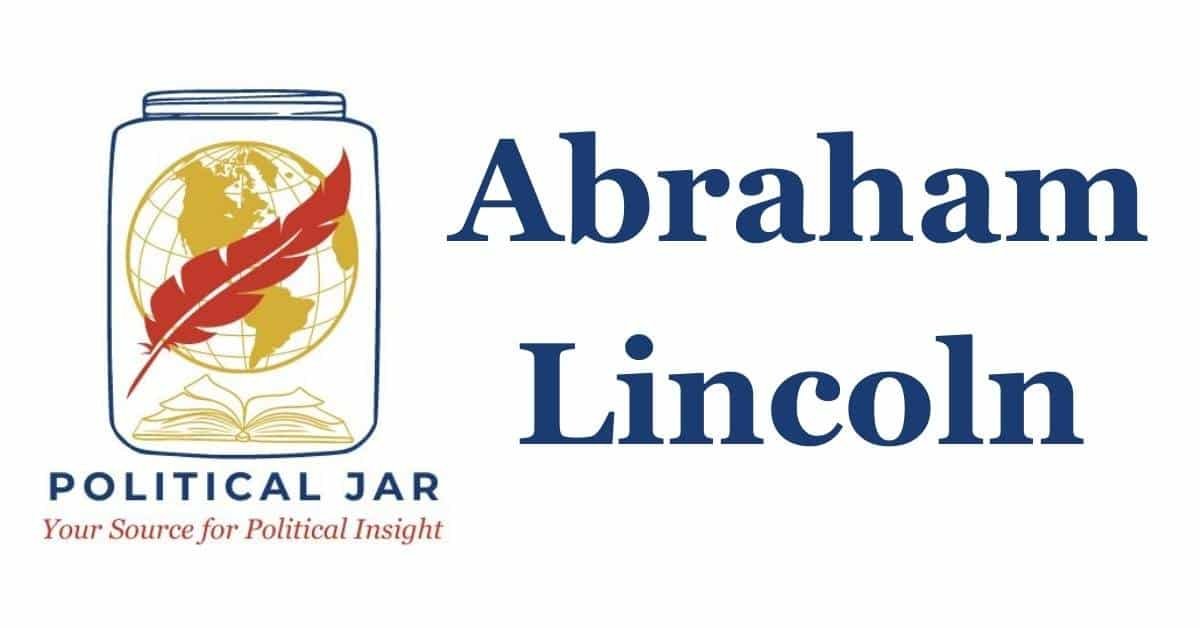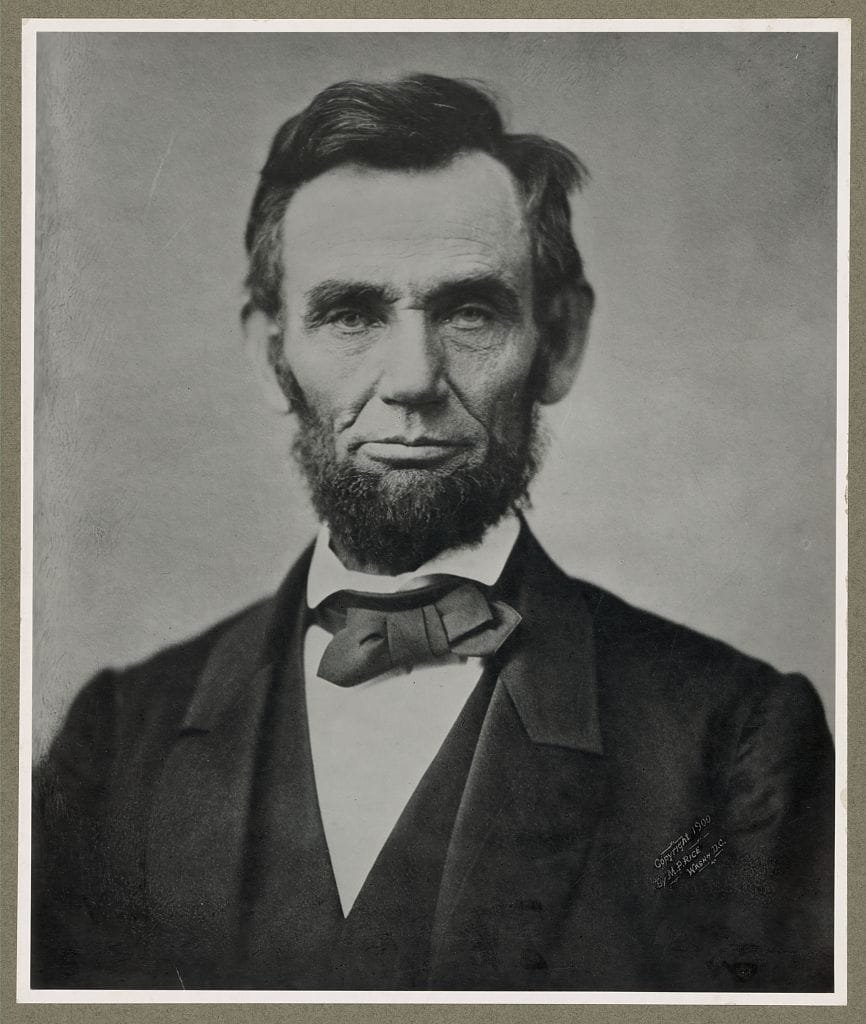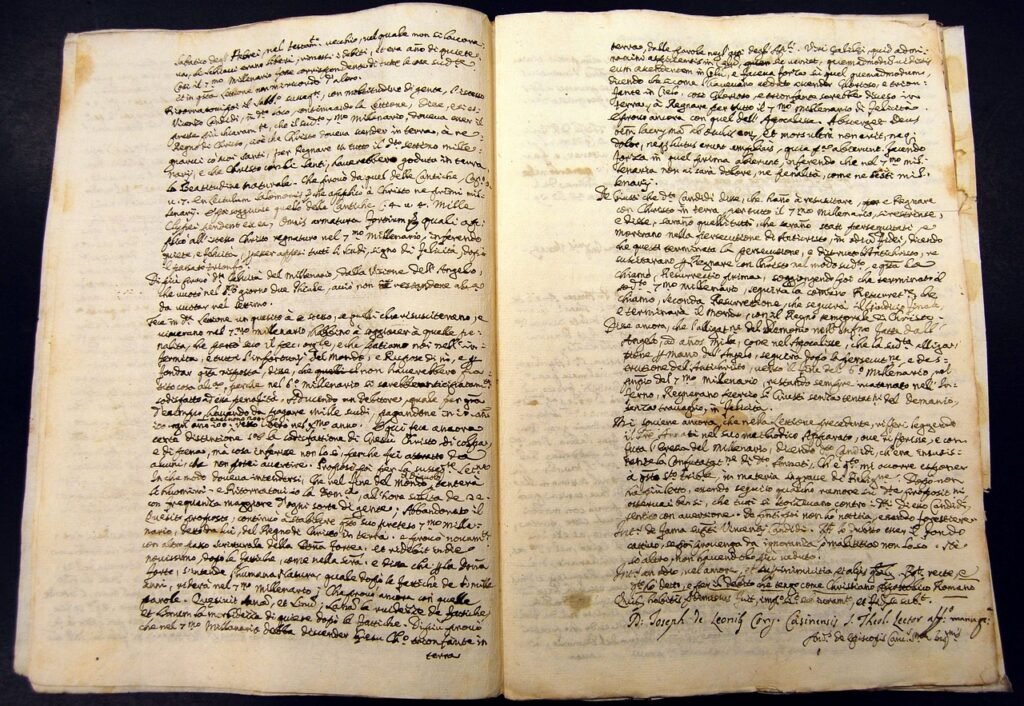




Abraham Lincoln
Abraham Lincoln, the 16th President of the United States, is one of the most revered figures in American history. Serving from 1861 to 1865, his leadership during the Civil War and his efforts to abolish slavery have left an indelible mark on the nation. This biography explores Lincoln’s life from his humble beginnings to his assassination and legacy, providing a detailed and an authoritative account of his contributions to American history.
Early Life and Education
Birth and Family Background
Abraham Lincoln was born on February 12, 1809, in a log cabin in Hardin County, Kentucky (now LaRue County). He was the second child of Thomas and Nancy Hanks Lincoln. The Lincoln family was of modest means, and Abraham’s early life was marked by hard work and limited formal education (White, 2014). Thomas Lincoln, a farmer and carpenter, moved the family to Indiana in 1816, seeking better opportunities.
Childhood and Education
Lincoln’s early education was sporadic and limited to brief periods of schooling, totaling less than a year. Despite these limitations, he was an avid reader and largely self-educated. He developed a love for books and learning, often walking miles to borrow books from neighbors (White, 2014). His stepmother, Sarah Bush Johnston, whom Thomas Lincoln married after Nancy’s death in 1818, encouraged his intellectual pursuits.
Early Work and Legal Career
In 1830, the Lincoln family moved to Illinois, where Abraham began his working life. He took on various jobs, including splitting rails for fences, which earned him the nickname “Rail-Splitter.” In 1832, Lincoln served briefly in the Black Hawk War, gaining valuable leadership experience (White, 2014).
Lincoln’s interest in law led him to study independently, and he was admitted to the Illinois bar in 1836. He moved to Springfield, Illinois, in 1837 to practice law, partnering with John T. Stuart, a cousin of Mary Todd, whom Lincoln would later marry. His legal career was successful, and he earned a reputation as an honest and effective lawyer (McPherson, 1993).
Early Political Career
Entry into Politics
Lincoln’s political career began with his election to the Illinois State Legislature in 1834 as a member of the Whig Party. He served four terms and became known for his opposition to slavery and his support for internal improvements, such as roads and canals (McPherson, 1993). His political skills and oratory gained him recognition, and he became a prominent figure in Illinois politics.
U.S. House of Representatives
In 1846, Lincoln was elected to the U.S. House of Representatives, where he served a single term. During his time in Congress, he was a vocal critic of the Mexican-American War, which he viewed as an unjust conflict aimed at expanding slavery (Oates, 1977). He introduced the “Spot Resolutions,” demanding to know the exact spot where blood was first shed, challenging President Polk’s justification for the war. This stance was unpopular and contributed to his decision not to seek re-election.
Return to Law and Political Reawakening
After his term in Congress, Lincoln returned to Springfield and resumed his legal practice. He remained active in politics, but it was the passage of the Kansas-Nebraska Act in 1854 that reawakened his political ambitions. The act, which allowed the expansion of slavery into new territories, outraged Lincoln and prompted him to re-enter the political arena (McPherson, 1993).
The Lincoln-Douglas Debates
In 1858, Lincoln ran for the U.S. Senate against Stephen A. Douglas, the architect of the Kansas-Nebraska Act. The series of seven debates between Lincoln and Douglas focused on the issue of slavery and its expansion. Although Lincoln lost the Senate race, the debates catapulted him to national prominence and established him as a leading voice against the spread of slavery (Oates, 1977).
Presidency
Election of 1860
The 1860 presidential election was a pivotal moment in American history. The Democratic Party split over the issue of slavery, with Northern Democrats nominating Stephen A. Douglas and Southern Democrats supporting John C. Breckinridge. The newly formed Republican Party nominated Lincoln, who campaigned on a platform of halting the expansion of slavery. Lincoln won the election with a plurality of the popular vote and a majority of the electoral vote, carrying all the Northern states (McPherson, 1993).
Secession and the Onset of Civil War
Lincoln’s election triggered the secession of Southern states, beginning with South Carolina in December 1860. By the time of his inauguration on March 4, 1861, seven states had seceded and formed the Confederate States of America. In his inaugural address, Lincoln appealed for unity and stated his intention to preserve the Union, but he also made it clear that he would not tolerate secession (Goodwin, 2005).
The Civil War began on April 12, 1861, when Confederate forces attacked Fort Sumter in Charleston, South Carolina. Lincoln responded by calling for 75,000 volunteers to suppress the rebellion, marking the start of a bloody and prolonged conflict (McPherson, 1988).
Leadership During the Civil War
Lincoln faced immense challenges as he navigated the nation through the Civil War. His leadership was characterized by his determination to preserve the Union and his evolving views on slavery. He took significant measures to maintain support for the war effort, including suspending habeas corpus and issuing the Emancipation Proclamation.
Emancipation Proclamation
One of Lincoln’s most significant actions was the issuance of the Emancipation Proclamation on January 1, 1863. The proclamation declared all slaves in Confederate-held territory to be free. While it did not immediately free all enslaved people, it fundamentally transformed the character of the war, making the abolition of slavery a central goal of the Union war effort. It also allowed African Americans to join the Union Army, bolstering its numbers and morale (Goodwin, 2005).
Gettysburg Address
Lincoln’s Gettysburg Address, delivered on November 19, 1863, at the dedication of the Soldiers’ National Cemetery in Gettysburg, Pennsylvania, is one of the most famous speeches in American history. In just 272 words, Lincoln reaffirmed the principles of liberty and equality and emphasized the importance of national unity. He honored the soldiers who had given their lives and called for a “new birth of freedom” to ensure that “government of the people, by the people, for the people, shall not perish from the earth” (White, 2014).
Re-election and Conclusion of the War
Lincoln’s leadership and the Union’s military successes helped secure his re-election in 1864. He ran on a National Union ticket with Andrew Johnson, a Southern Democrat who supported the Union. Lincoln’s re-election was a mandate to continue the war effort until the Confederacy was defeated (McPherson, 1993).
The Civil War ended on April 9, 1865, when Confederate General Robert E. Lee surrendered to Union General Ulysses S. Grant at Appomattox Court House, Virginia. Lincoln’s vision for post-war America included a lenient approach to Reconstruction, aimed at healing the nation’s wounds and re-integrating the Southern states into the Union (Goodwin, 2005).
Assassination
The Tragic Event
Just days after the Confederate surrender, on April 14, 1865, Lincoln attended a play at Ford’s Theatre in Washington, D.C. During the performance, he was shot in the head by John Wilkes Booth, a Confederate sympathizer. Lincoln was carried to a boarding house across the street, where he died the following morning, April 15, 1865. His assassination shocked the nation and plunged it into mourning (Oates, 1977).
National Mourning and Legacy
Lincoln’s death was a profound loss for the United States. His body lay in state in the Capitol, and a funeral train carried his remains to Springfield, Illinois, with millions of Americans paying their respects along the route. Lincoln’s legacy as the Great Emancipator and the leader who preserved the Union solidified his place as one of the most significant figures in American history (Goodwin, 2005).
Legacy
Emancipation and Civil Rights
Lincoln’s legacy is inextricably linked to his role in ending slavery. The 13th Amendment, which abolished slavery in the United States, was passed by Congress on January 31, 1865, and ratified later that year. Lincoln’s vision for a post-war America included not only the end of slavery but also the integration of freed slaves into American society as full citizens. His efforts laid the groundwork for future civil rights advancements (White, 2014).
Preservation of the Union
Lincoln’s steadfast commitment to preserving the Union during the Civil War has made him a symbol of national unity. His leadership during the nation’s most challenging period demonstrated his belief in the enduring value of the United States and its democratic principles. Lincoln’s actions ensured that the nation emerged from the Civil War intact and stronger (McPherson, 1993).
Political Philosophy and Leadership
Lincoln’s political philosophy, grounded in the principles of the Declaration of Independence and the Constitution, emphasized equality, liberty, and democracy. His ability to communicate these ideals through speeches and writings has left a lasting impact on American political thought. Lincoln’s leadership style, characterized by humility, empathy, and a deep sense of justice, continues to be a model for political leaders (Goodwin, 2005).
Memorials and Honors
Lincoln’s legacy is commemorated in numerous ways across the United States. The Lincoln Memorial in Washington, D.C., dedicated in 1922, is a symbol of his enduring influence and a site of reflection for visitors from around the world. His image is featured on the $5 bill and the penny, and numerous schools, counties, and cities are named in his honor. Lincoln’s life and achievements are celebrated annually on Presidents’ Day and other occasions (Oates, 1977).
Final Summary
Abraham Lincoln’s life and presidency exemplify the ideals of leadership, resilience, and dedication to justice. From his humble beginnings in Kentucky to his tragic assassination, Lincoln’s journey was marked by his unwavering commitment to the principles of liberty and equality. His leadership during the Civil War and his efforts to abolish slavery have left an indelible mark on the nation, ensuring his place as one of America’s greatest presidents. Lincoln’s legacy continues to inspire and guide future generations in the ongoing pursuit of a more just and unified nation.
References
Goodwin, D. K. (2005). Team of Rivals: The Political Genius of Abraham Lincoln. Simon & Schuster.
McPherson, J. M. (1988). Battle Cry of Freedom: The Civil War Era. Oxford University Press.
McPherson, J. M. (1993). Ordeal by Fire: The Civil War and Reconstruction. McGraw-Hill.
Oates, S. B. (1977). With Malice Toward None: A Life of Abraham Lincoln. Harper & Row.
White, R. J. (2014). A. Lincoln: A Biography. Random House.